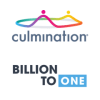Dive Brief:
- GlaxoSmithKline will substantially narrow its drug development focus, prioritizing mainstay respiratory and HIV businesses as well as efforts in oncology and inflammation in a bid to regain competitiveness and make up for a pipeline that has disappointed in recent years.
- In an unflinching assessment of GSK's recent performance in R&D, newly minted CEO Emma Walmsley underscored the need for the British drugmaker to more narrowly focus its capital resources while improving the speed at which it identifies and develops product candidates.
- "We have to make sure we can back our winners," Walmsley said, echoing a pattern among large pharma companies of funneling R&D investment to clearly defined core therapeutic areas. As part of that effort, GSK has decided to terminate, partner or divest 13 clinical programs and another 20 preclinical projects — an extensive culling of its pipeline that will prune seven Phase 2 or 3 assets.
Dive Insight:
Four months into the job as GSK's chief, Walmsley is moving quickly with a major effort to revamp the drugmaker's competitiveness, noting the company has fallen behind its peers on key benchmarks.
"Longer-term performance has been weaker than we all would have liked," Walmsley said on a July 26 earnings call. Citing slow starts and missed opportunities, the CEO noted its R&D output hasn't adequately translated into commercial successes.
While GSK has launched 25 new molecular entities (NME) between 2006 and 2016, its estimated peak year sales per NME is only $600 million — well below the industry average of $1.8 billion. In Walmsley's view, part of the problem has been GSK has spread its R&D money across too many projects, sapping momentum for larger priorities.

As part of its new strategy, GSK said it will devote 80% of its R&D spend to two core and two "potential therapy" areas: respiratory and HIV in the former category, and inflammation and oncology in the latter.
Part of the rationale behind this is a belief on the part of Walmsley that the company failed to sufficiently support priority assets in the past. By dropping 30-plus pipeline projects — with more to come, potentially — GSK frees up capital to better invest in areas where it thinks it has a chance to succeed.
Notably, the pipeline cull includes dropping partnered rights to J&J's under-review arthritis hopeful sirukumab and a progressive withdrawal of support for Tanzeum (albiglutide) — formerly among the company's 11 new products it expects will drive future growth.
Additionally, the narrower focus will allow GSK to put up to 500 more people behind the identified priority programs, Walmsley said.
In the near-term, attention will be focused on three programs: the shingles vaccine Shingrix, a "closed triple" in chronic obstructive pulmonary disease and two-drug HIV regimens.
That focus can already be seen in GSK's decision to use a valuable priority review voucher to accelerate regulatory review of a regimen combining Tivicay (dolutegravir) with J&J's Edurant (rilpivirine).
As a backdrop to this prioritization, GSK hopes to improve cost discipline and streamline its manufacturing and supply networks. The company expects to realize an additional £1 billion pounds in annual cost savings by 2020 — money it will pump into R&D, product launches and improving margins.
All of these moves are aimed at seeing the company through a period when revenues from its flagship Advair brand are expected to drop substantially due to inbound generic competition. Still, GSK reiterated its 5-year guidance of low- to mid-single digit sales growth through 2020
Overall group sales were up 3% on a constant exchange rate basis to £7.3 billion in the second quarter, compared to the same period a year prior.
In the pharma business, growth was primarily driven by the company's HIV medicines Tivicay and Triumeq (abacavir/dolutegravir/lamivudine) and, to a lesser extent, the COPD drug Breo Ellipta (fluticasone/furoate/vilanterol).
Vaccines sales rose 5% on a constant exchange rate basis, backed by higher demand for meningitis vaccines, particularly Bexsero (meningococcal group B).










